Yifan Zhou
InfoMosaic-Bench: Evaluating Multi-Source Information Seeking in Tool-Augmented Agents
Oct 02, 2025Abstract:Information seeking is a fundamental requirement for humans. However, existing LLM agents rely heavily on open-web search, which exposes two fundamental weaknesses: online content is noisy and unreliable, and many real-world tasks require precise, domain-specific knowledge unavailable from the web. The emergence of the Model Context Protocol (MCP) now allows agents to interface with thousands of specialized tools, seemingly resolving this limitation. Yet it remains unclear whether agents can effectively leverage such tools -- and more importantly, whether they can integrate them with general-purpose search to solve complex tasks. Therefore, we introduce InfoMosaic-Bench, the first benchmark dedicated to multi-source information seeking in tool-augmented agents. Covering six representative domains (medicine, finance, maps, video, web, and multi-domain integration), InfoMosaic-Bench requires agents to combine general-purpose search with domain-specific tools. Tasks are synthesized with InfoMosaic-Flow, a scalable pipeline that grounds task conditions in verified tool outputs, enforces cross-source dependencies, and filters out shortcut cases solvable by trivial lookup. This design guarantees both reliability and non-triviality. Experiments with 14 state-of-the-art LLM agents reveal three findings: (i) web information alone is insufficient, with GPT-5 achieving only 38.2% accuracy and 67.5% pass rate; (ii) domain tools provide selective but inconsistent benefits, improving some domains while degrading others; and (iii) 22.4% of failures arise from incorrect tool usage or selection, highlighting that current LLMs still struggle with even basic tool handling.
Laplacian Analysis Meets Dynamics Modelling: Gaussian Splatting for 4D Reconstruction
Aug 07, 2025Abstract:While 3D Gaussian Splatting (3DGS) excels in static scene modeling, its extension to dynamic scenes introduces significant challenges. Existing dynamic 3DGS methods suffer from either over-smoothing due to low-rank decomposition or feature collision from high-dimensional grid sampling. This is because of the inherent spectral conflicts between preserving motion details and maintaining deformation consistency at different frequency. To address these challenges, we propose a novel dynamic 3DGS framework with hybrid explicit-implicit functions. Our approach contains three key innovations: a spectral-aware Laplacian encoding architecture which merges Hash encoding and Laplacian-based module for flexible frequency motion control, an enhanced Gaussian dynamics attribute that compensates for photometric distortions caused by geometric deformation, and an adaptive Gaussian split strategy guided by KDTree-based primitive control to efficiently query and optimize dynamic areas. Through extensive experiments, our method demonstrates state-of-the-art performance in reconstructing complex dynamic scenes, achieving better reconstruction fidelity.
RadFabric: Agentic AI System with Reasoning Capability for Radiology
Jun 17, 2025Abstract:Chest X ray (CXR) imaging remains a critical diagnostic tool for thoracic conditions, but current automated systems face limitations in pathology coverage, diagnostic accuracy, and integration of visual and textual reasoning. To address these gaps, we propose RadFabric, a multi agent, multimodal reasoning framework that unifies visual and textual analysis for comprehensive CXR interpretation. RadFabric is built on the Model Context Protocol (MCP), enabling modularity, interoperability, and scalability for seamless integration of new diagnostic agents. The system employs specialized CXR agents for pathology detection, an Anatomical Interpretation Agent to map visual findings to precise anatomical structures, and a Reasoning Agent powered by large multimodal reasoning models to synthesize visual, anatomical, and clinical data into transparent and evidence based diagnoses. RadFabric achieves significant performance improvements, with near-perfect detection of challenging pathologies like fractures (1.000 accuracy) and superior overall diagnostic accuracy (0.799) compared to traditional systems (0.229 to 0.527). By integrating cross modal feature alignment and preference-driven reasoning, RadFabric advances AI-driven radiology toward transparent, anatomically precise, and clinically actionable CXR analysis.
SWE-Dev: Evaluating and Training Autonomous Feature-Driven Software Development
May 22, 2025Abstract:Large Language Models (LLMs) have shown strong capability in diverse software engineering tasks, e.g. code completion, bug fixing, and document generation. However, feature-driven development (FDD), a highly prevalent real-world task that involves developing new functionalities for large, existing codebases, remains underexplored. We therefore introduce SWE-Dev, the first large-scale dataset (with 14,000 training and 500 test samples) designed to evaluate and train autonomous coding systems on real-world feature development tasks. To ensure verifiable and diverse training, SWE-Dev uniquely provides all instances with a runnable environment and its developer-authored executable unit tests. This collection not only provides high-quality data for Supervised Fine-Tuning (SFT), but also enables Reinforcement Learning (RL) by delivering accurate reward signals from executable unit tests. Our extensive evaluations on SWE-Dev, covering 17 chatbot LLMs, 10 reasoning models, and 10 Multi-Agent Systems (MAS), reveal that FDD is a profoundly challenging frontier for current AI (e.g., Claude-3.7-Sonnet achieves only 22.45\% Pass@3 on the hard test split). Crucially, we demonstrate that SWE-Dev serves as an effective platform for model improvement: fine-tuning on training set enabled a 7B model comparable to GPT-4o on \textit{hard} split, underscoring the value of its high-quality training data. Code is available here \href{https://github.com/justLittleWhite/SWE-Dev}{https://github.com/justLittleWhite/SWE-Dev}.
IRNN: Innovation-driven Recurrent Neural Network for Time-Series Data Modeling and Prediction
May 09, 2025Abstract:Many real-world datasets are time series that are sequentially collected and contain rich temporal information. Thus, a common interest in practice is to capture dynamics of time series and predict their future evolutions. To this end, the recurrent neural network (RNN) has been a prevalent and effective machine learning option, which admits a nonlinear state-space model representation. Motivated by the resemblance between RNN and Kalman filter (KF) for linear state-space models, we propose in this paper Innovation-driven RNN (IRNN), a novel RNN architecture tailored to time-series data modeling and prediction tasks. By adapting the concept of "innovation" from KF to RNN, past prediction errors are adopted as additional input signals to update hidden states of RNN and boost prediction performance. Since innovation data depend on network parameters, existing training algorithms for RNN do not apply to IRNN straightforwardly. Thus, a tailored training algorithm dubbed input updating-based back-propagation through time (IU-BPTT) is further proposed, which alternates between updating innovations and optimizing network parameters via gradient descent. Experiments on real-world benchmark datasets show that the integration of innovations into various forms of RNN leads to remarkably improved prediction accuracy of IRNN without increasing the training cost substantially.
SAS-Prompt: Large Language Models as Numerical Optimizers for Robot Self-Improvement
Apr 29, 2025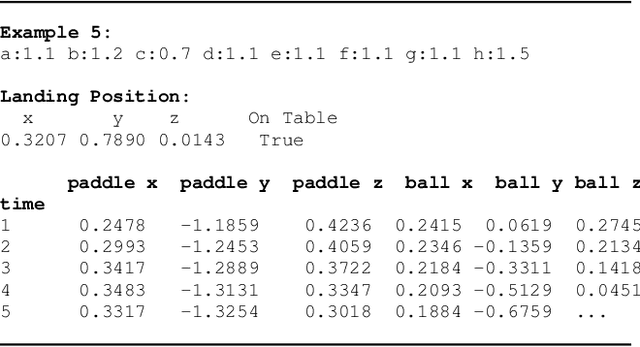
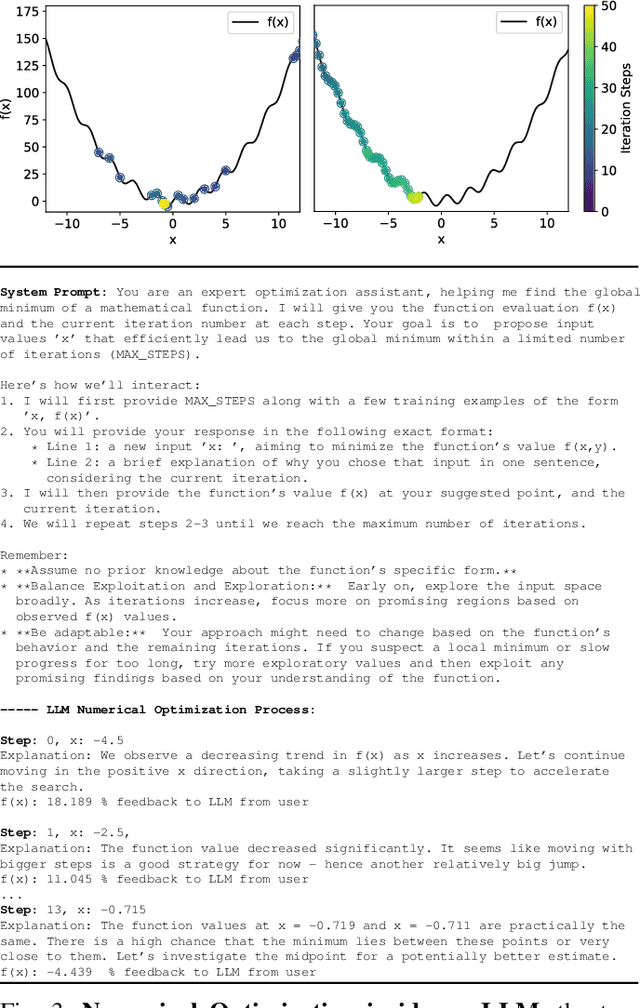
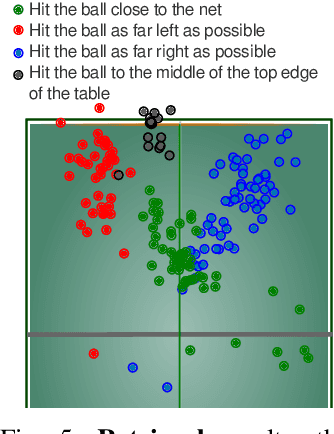
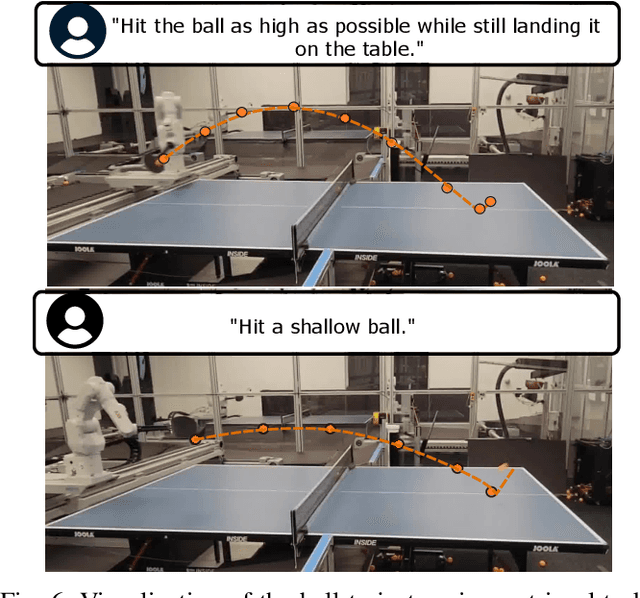
Abstract:We demonstrate the ability of large language models (LLMs) to perform iterative self-improvement of robot policies. An important insight of this paper is that LLMs have a built-in ability to perform (stochastic) numerical optimization and that this property can be leveraged for explainable robot policy search. Based on this insight, we introduce the SAS Prompt (Summarize, Analyze, Synthesize) -- a single prompt that enables iterative learning and adaptation of robot behavior by combining the LLM's ability to retrieve, reason and optimize over previous robot traces in order to synthesize new, unseen behavior. Our approach can be regarded as an early example of a new family of explainable policy search methods that are entirely implemented within an LLM. We evaluate our approach both in simulation and on a real-robot table tennis task. Project website: sites.google.com/asu.edu/sas-llm/
EG-Gaussian: Epipolar Geometry and Graph Network Enhanced 3D Gaussian Splatting
Apr 18, 2025Abstract:In this paper, we explore an open research problem concerning the reconstruction of 3D scenes from images. Recent methods have adopt 3D Gaussian Splatting (3DGS) to produce 3D scenes due to its efficient training process. However, these methodologies may generate incomplete 3D scenes or blurred multiviews. This is because of (1) inaccurate 3DGS point initialization and (2) the tendency of 3DGS to flatten 3D Gaussians with the sparse-view input. To address these issues, we propose a novel framework EG-Gaussian, which utilizes epipolar geometry and graph networks for 3D scene reconstruction. Initially, we integrate epipolar geometry into the 3DGS initialization phase to enhance initial 3DGS point construction. Then, we specifically design a graph learning module to refine 3DGS spatial features, in which we incorporate both spatial coordinates and angular relationships among neighboring points. Experiments on indoor and outdoor benchmark datasets demonstrate that our approach significantly improves reconstruction accuracy compared to 3DGS-based methods.
WORLDMEM: Long-term Consistent World Simulation with Memory
Apr 16, 2025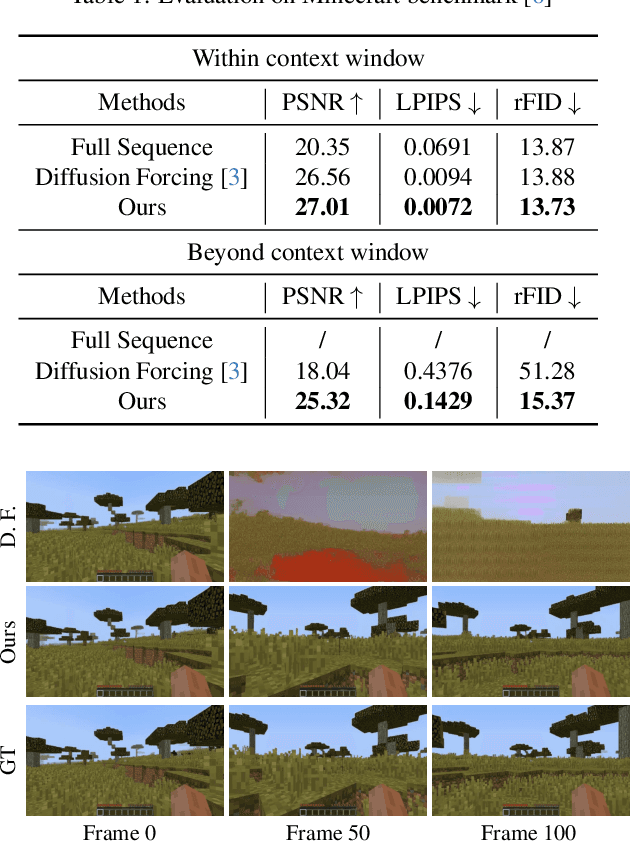
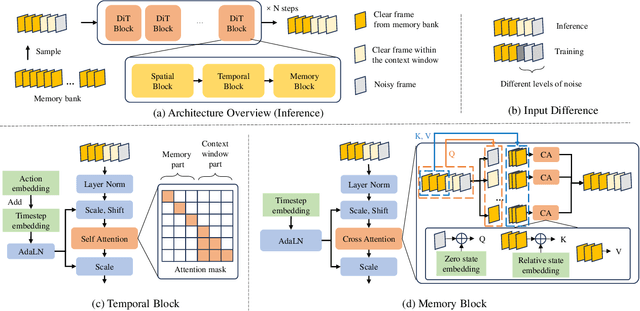

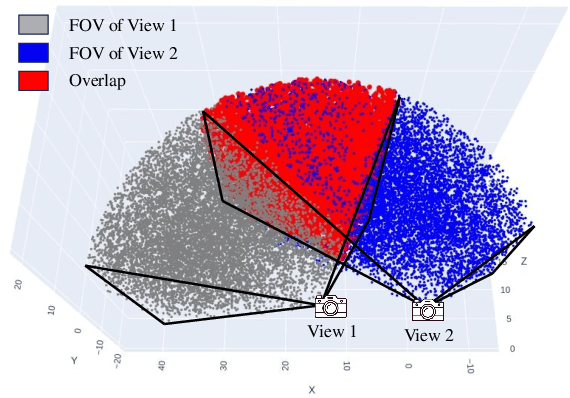
Abstract:World simulation has gained increasing popularity due to its ability to model virtual environments and predict the consequences of actions. However, the limited temporal context window often leads to failures in maintaining long-term consistency, particularly in preserving 3D spatial consistency. In this work, we present WorldMem, a framework that enhances scene generation with a memory bank consisting of memory units that store memory frames and states (e.g., poses and timestamps). By employing a memory attention mechanism that effectively extracts relevant information from these memory frames based on their states, our method is capable of accurately reconstructing previously observed scenes, even under significant viewpoint or temporal gaps. Furthermore, by incorporating timestamps into the states, our framework not only models a static world but also captures its dynamic evolution over time, enabling both perception and interaction within the simulated world. Extensive experiments in both virtual and real scenarios validate the effectiveness of our approach.
FreeFlux: Understanding and Exploiting Layer-Specific Roles in RoPE-Based MMDiT for Versatile Image Editing
Mar 20, 2025
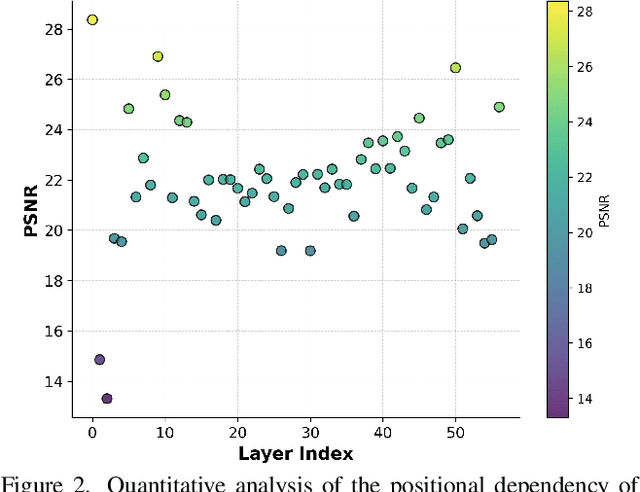
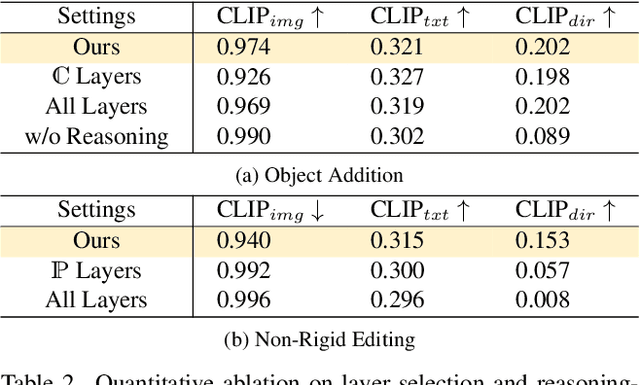
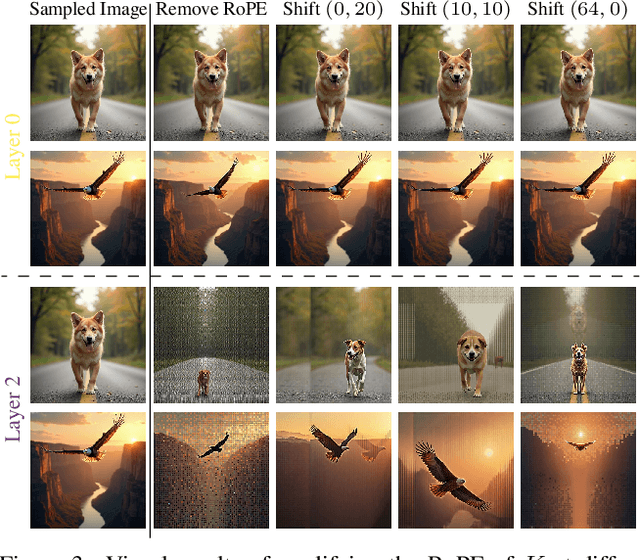
Abstract:The integration of Rotary Position Embedding (RoPE) in Multimodal Diffusion Transformer (MMDiT) has significantly enhanced text-to-image generation quality. However, the fundamental reliance of self-attention layers on positional embedding versus query-key similarity during generation remains an intriguing question. We present the first mechanistic analysis of RoPE-based MMDiT models (e.g., FLUX), introducing an automated probing strategy that disentangles positional information versus content dependencies by strategically manipulating RoPE during generation. Our analysis reveals distinct dependency patterns that do not straightforwardly correlate with depth, offering new insights into the layer-specific roles in RoPE-based MMDiT. Based on these findings, we propose a training-free, task-specific image editing framework that categorizes editing tasks into three types: position-dependent editing (e.g., object addition), content similarity-dependent editing (e.g., non-rigid editing), and region-preserved editing (e.g., background replacement). For each type, we design tailored key-value injection strategies based on the characteristics of the editing task. Extensive qualitative and quantitative evaluations demonstrate that our method outperforms state-of-the-art approaches, particularly in preserving original semantic content and achieving seamless modifications.
From Task-Specific Models to Unified Systems: A Review of Model Merging Approaches
Mar 12, 2025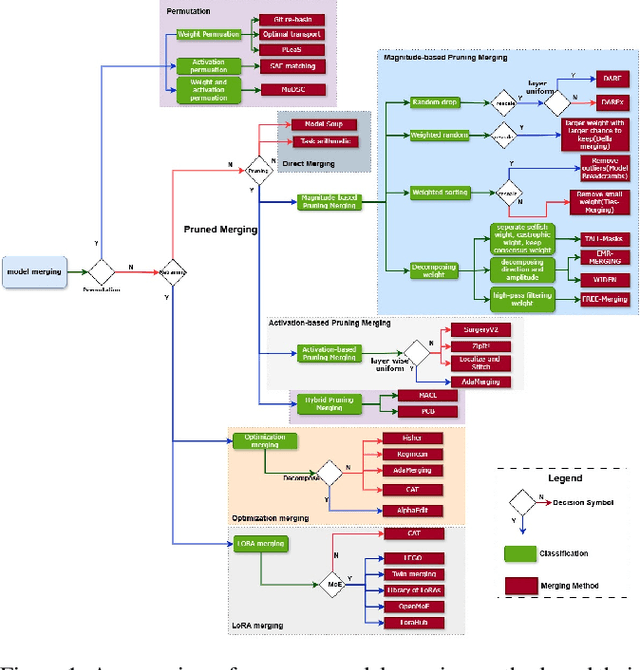
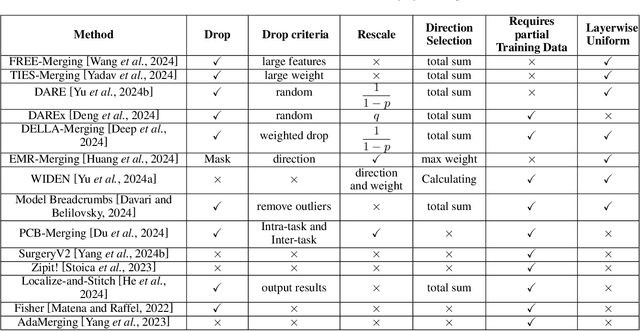
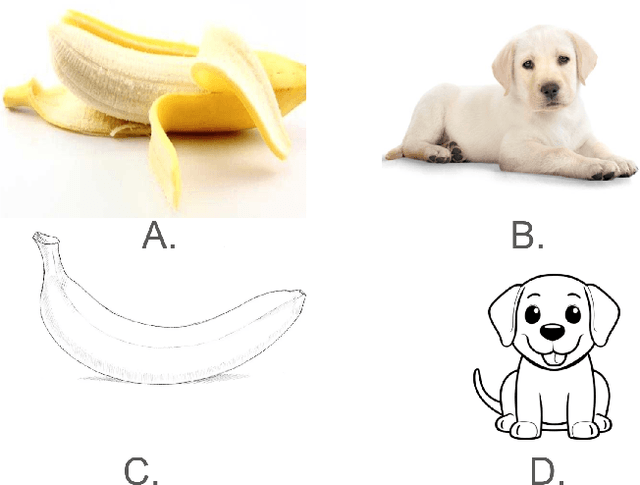
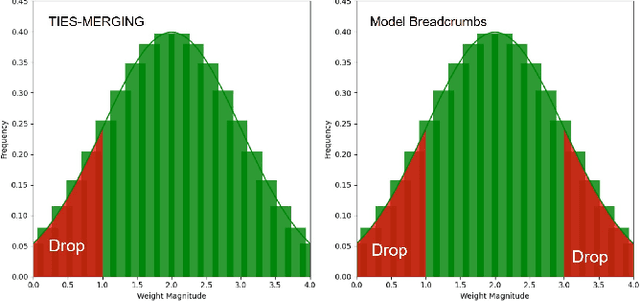
Abstract:Model merging has achieved significant success, with numerous innovative methods proposed to enhance capabilities by combining multiple models. However, challenges persist due to the lack of a unified framework for classification and systematic comparative analysis, leading to inconsistencies in terminologies and categorizations. Meanwhile, as an increasing number of fine-tuned models are publicly available, their original training data often remain inaccessible due to privacy concerns or intellectual property restrictions. This makes traditional multi-task learning based on shared training data impractical. In scenarios where direct access to training data is infeasible, merging model parameters to create a unified model with broad generalization across multiple domains becomes crucial, further underscoring the importance of model merging techniques. Despite the rapid progress in this field, a comprehensive taxonomy and survey summarizing recent advances and predicting future directions are still lacking. This paper addresses these gaps by establishing a new taxonomy of model merging methods, systematically comparing different approaches, and providing an overview of key developments. By offering a structured perspective on this evolving area, we aim to help newcomers quickly grasp the field's landscape and inspire further innovations.
 Add to Chrome
Add to Chrome Add to Firefox
Add to Firefox Add to Edge
Add to Edge